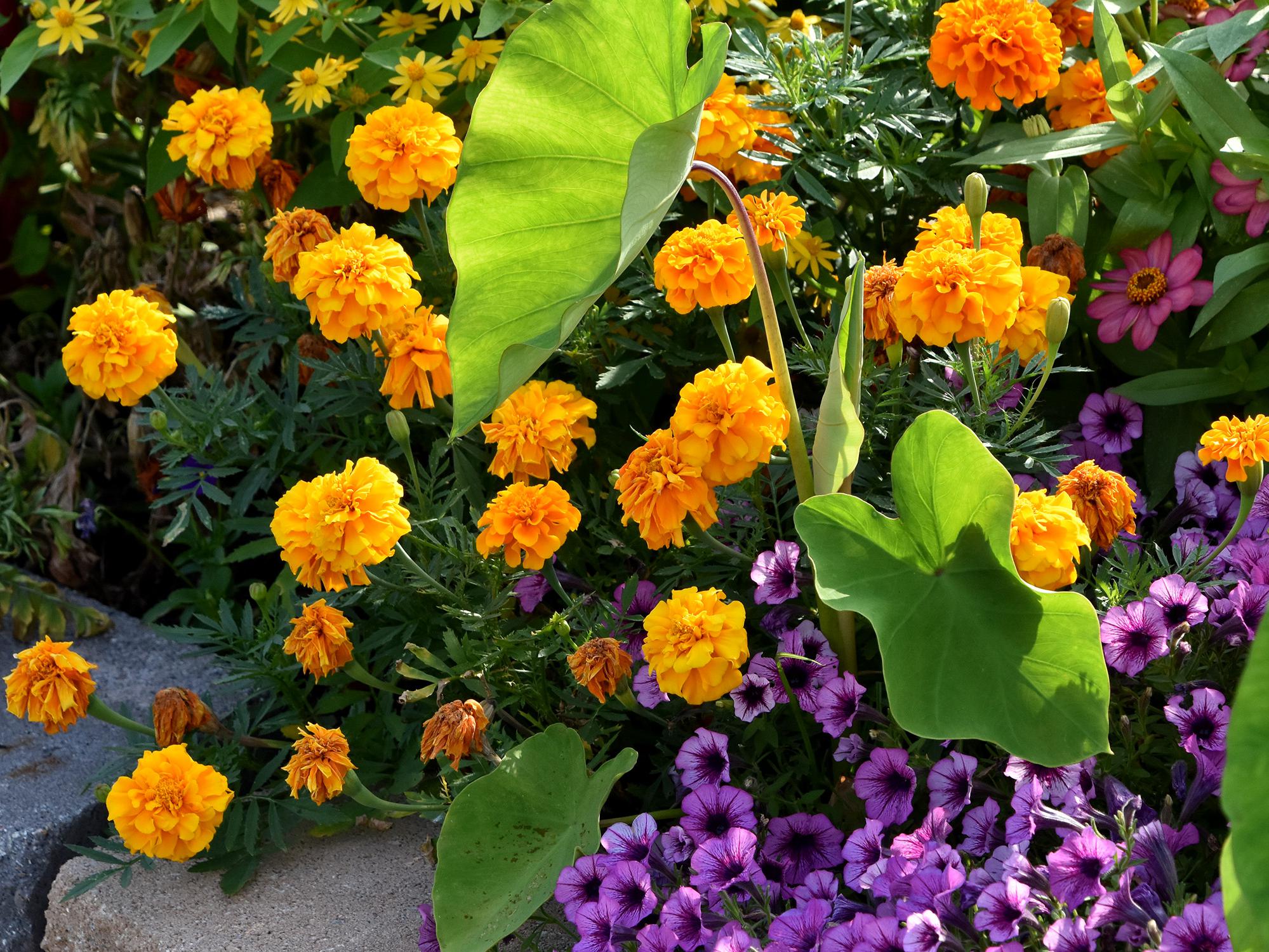Information Possibly Outdated
The information presented on this page was originally released on June 4, 2018. It may not be outdated, but please search our site for more current information. If you plan to quote or reference this information in a publication, please check with the Extension specialist or author before proceeding.
Choose marigolds for strong summer beauty
I have to accept that the hot and humid summer has arrived in my coastal Mississippi garden and landscape.
The barometer I use to measure the arrival of summer may not be what you think. I don’t use the meteorological or astrological calendars. I don’t even use the start of hurricane season.
I go by how many times I change my clothes during the course of the day while working in the yard. This weekend was a sort of milestone in changing sweaty clothes. Saturday was a three-change day; Sunday was a four-change day. Yep, summer has officially arrived.
Along with the rising temperatures comes the increase in questions about what plants to buy for easy summer color, whatever that is. The popular question is, “If I could grow only one plant, what should I choose?” My answer is always based on the season, the week or even the day. Currently, as we are at the start of a long, hot summer, the answer is quite simple: marigolds!
For the longest time, marigolds have been my go-to hot weather color annuals. Marigolds are great in-ground or in containers, and they add a cheerful and colorful brightness wherever they are planted.
If you haven’t already transplanted some, it’s not too late. You can transplant marigolds at any time. In fact, you can plant their seed all summer long. Late-planted marigolds have a tremendous place in fall landscapes. I’m a big advocate of using marigolds instead of our traditional fall mums, and mari-mums make a great, long-lasting color display.
The two most widely available marigolds are the American and the French marigold. Regardless of the name, all marigolds come from Mexico and Central America.
The American marigold, known scientifically as Tagetes erecta, is also commonly called the African marigold. There are many series available, ranging in size from 15 inches to over 3 feet tall. A flowering annual series is a group that has similar plant and flower sizes with many different flower colors.
American marigolds are recognized by their pom-pom double flowers. Popular series include the First Lady, Discovery and Antiqua, which is my favorite. These series feature colors of white, yellow, orange and dark orange. With their big flowers and taller stems, American marigolds sometimes need staking.
French marigolds, known scientifically as Tagetes patula, are smaller and have more flower variety. They have single as well as double flowers. Colors include yellow, orange and reds, along with stripes. Popular series include Janie and Sophia. French marigolds are generally less than 15 inches tall.
Marigolds are free flowering from early summer to frost, but you should deadhead to remove the faded flowers.
To many gardeners, marigolds are just those common yellow flowers. They’re often taken for granted because they’re easy to grow and don’t require much care. What could be better?
As long as you plant them in the full sun and water consistently, marigolds may just become your go-to plant when you want a good summer-flowering annual.




